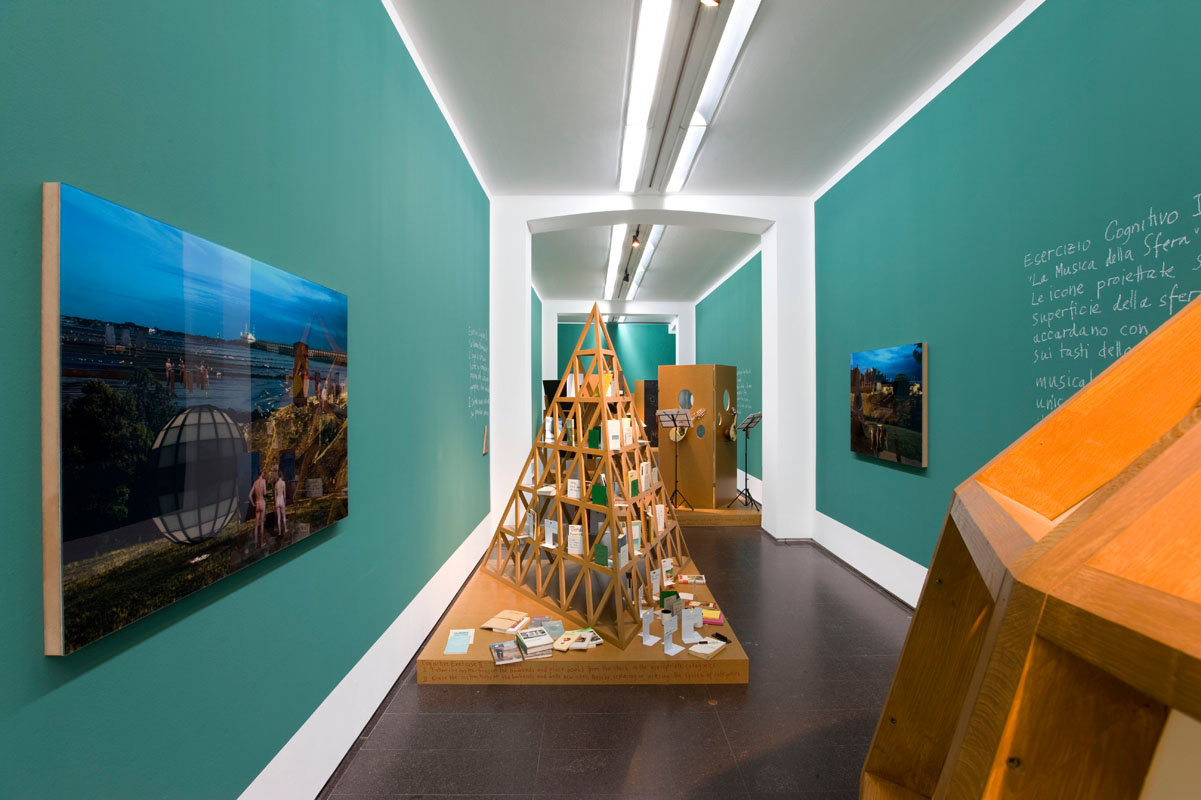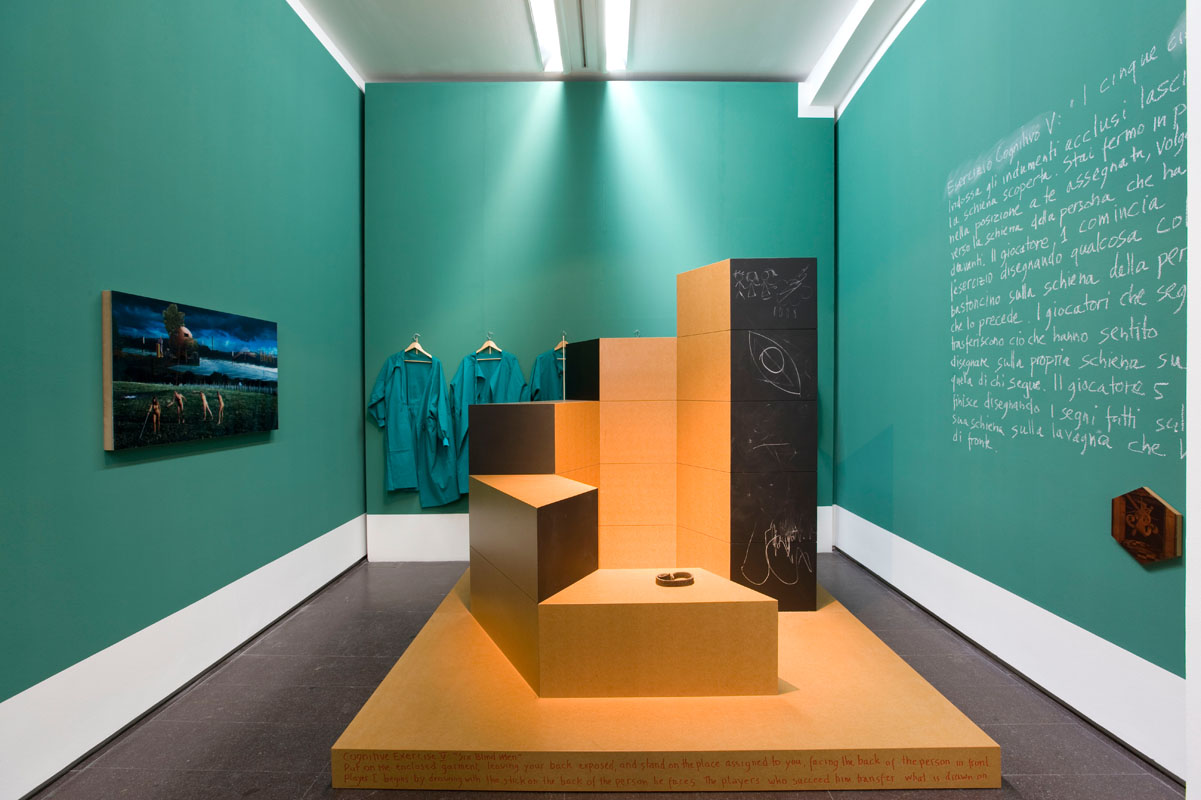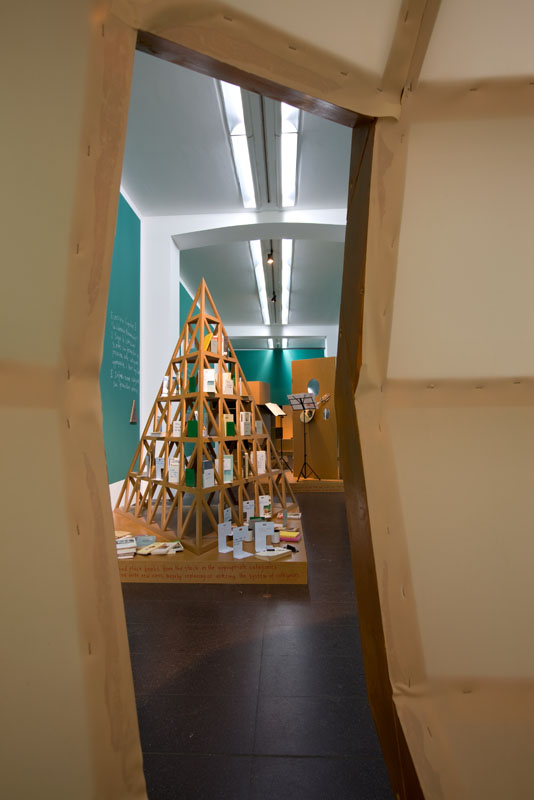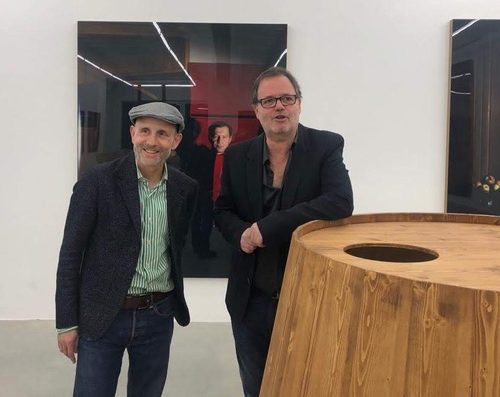Michael Clegg and Martin Guttmann return to Milan with their latest work created in homage to Italian culture and art – Studiolo Nuovo. Commissioned by the gallery and presented in the gallery of Lia Rumma in Naples in November 2007, this work follows the installation Falsa Prospettiva presented at the Milan gallery in February 2001 and the solo exhibition in Naples in 1987. In the early Renaissance, the aristocratic palace was redesigned to allow for a division between the public and private wings. A public sitting room, accessible to visitors, was placed near the entrance, separated from a suite of private rooms located in the rear wings of the palace.
The “studiolo” was the most private of all spaces; apart from being used as a library, a reading room, a music room and a cabinet of curiosities – it was also the location of collections of naturalia, artificialia, memorabilia. In addition, the studiolo had a more specific function - the studiolo was designed as a cognitive laboratory of sorts, a “total environment” dedicated to the improvement of the memory and imagination. The different elements of the studiolo - library, music room, collections of objects and of artworks - were all subordinated to that objective, namely, they were treated as aids to cognitive and intellectual development. They were presumed to be related to each other by a neo-platonic theory of the human soul that assigned to each its own special role; each part of the studiolo was dedicated to improve an aspect of the cognitive and intellectual capacities of the mind. The aim of the present project by Clegg & Guttmann is to re-evaluate the studiolo and suggest ways of transforming it into a contemporary form that combines a variety of functions, where the art objects are not treated merely as collectables but as aspects of an environment dedicated to cognitive and philosophical contemplation.
The installation by Clegg & Guttmann was conceived as a direct descendent of the Renaissance studiolo. It is supposed to carry to the present the original preoccupation with memory and imagination. In the contemporary context the problematics related to this theme are be somewhat different. The attitudes towards memory and imagination have undergone many transformations, as has the educational theory that aims to improve them. But the idea of embedding art in a “room for thoughts” or, better still, “room of thought” seems as attractive and suggestive today as it was in the early Renaissance; the work of art should not be treated only as decorative object but as a part of a comprehensive design that promotes a life of learning and contemplation. The installation contains five separate environments, each organised as a separate cognitive exercise that concerns an aspect of the system of remembering and imagining. The different exercises involve both analytic and synthetic operations - the decomposition of experience to its elements and the construction of new wholes by combining the elements differently. They are concerned with reading, drawing, playing music, etc. Clegg and Guttmann imagine the Studiolo Nuovo “as an environment where the different aspects of the life of the educated mind will be reflected upon, improved and extended beyond their current possibilities”. The work “the Music of the Sphere” that opens the installation, is a reference to the fantastic geometric designs attributed to Leonardo, and executed in order to illustrate the treaty “De Divina Proportione” by Luca Pacioli (1498), whose manuscript is kept in the Ambrosian library. Another reference alluded to in the intallation, is to be found in The Poldi-Pezzoli museum - a depiction of the musa of the dance Tersicore by Cosmè Tura, which was retrieved following the dismantling of the studiolo of Belfiore in Ferrara.











